Expert Medical Science Causation Testimony Improperly Excluded under Daubert; ID of Sole Cause of Medical Condition Not Required
April 15, 2014 —
R. Bryan Martin & Whitney L. Stefko - Haight Brown & Bonesteel LLPOn April 4, 2014, in Messick v. Novartis Pharmaceuticals Corp., the United States Court of Appeals for the Ninth Circuit reversed the district court's summary judgment in favor of Defendant Pharmaceutical Corporation because the district court improperly excluded expert testimony. The three-judge panel held that the district court erred by excluding causation testimony offered by Plaintiff's expert it found to be irrelevant and unreliable.
Plaintiff was diagnosed with breast cancer in 2000. In response to her development of osteoporosis after chemotherapy, Plaintiff treated with the drug Zometa for several months in 2002. Zometa is a bisphosphonate, a class of drug commonly used to treat multiple myeloma. Such drugs are generally used to reduce or eliminate the possibility of skeletal-related degeneration and injuries to which cancer patients are particularly susceptible. Novartis Pharmaceuticals Corporation produces Zometa, which was approved by the FDA in 2001 and 2002. In 2005 after encountering issues with her jaw, it was discovered that Plaintiff had osteonecrosis near three of her teeth. The oral specialists treating Plaintiff did so under the assumption that she was suffering from bisphosphonate-related osteonecrosis of the jaw ("BRONJ"), a condition recognized by the American Association of Oral and Maxillofacial Surgeons ("AAOMS"). Plaintiff's BRONJ healed in 2008 - three years after beginning treatment.
Thereafter, Plaintiff brought suit against Novartis for strict products liability, negligent manufacture, negligent failure to warn, breach of express and implied warranty, and loss of consortium. In support of her claims, Plaintiff offered her expert's testimony on ONJ and BRONJ, and on the causal link between plaintiff's bisphosphonate treatment and later development of BRONJ. Novartis filed a Daubert motion to exclude the specific causation testimony of Plaintiff's experts and a motion seeking summary judgment. The district court granted both motions on the basis that Plaintiff's expert testimony was irrelevant and unreliable.
Reprinted courtesy of
R. Bryan Martin, Haight Brown & Bonesteel LLP and
Whitney L. Stefko, Haight Brown & Bonesteel LLP
Mr. Martin may be contacted at bmartin@hbblaw.com; Ms. Stefko may be contacted at wstefko@hbblaw.com
Read the court decisionRead the full story...Reprinted courtesy of
Who's Who Legal Recognizes Two White and Williams Lawyers as Thought/Global Leaders in Insurance and Reinsurance
August 28, 2023 —
White and Williams LLPWho's Who Legal (WWL), in association with Thought Leaders: USA - Insurance and Reinsurance 2023, has recognized two White and Williams lawyers as leading practitioners in their field. WWL’s research process uses a combination of proprietary digital and in-person qualitative techniques and interviews.
WWL named Patricia B. Santelle and Randy J. Maniloff as Thought Leaders in Insurance and Reinsurance 2023. Thought Leaders base their results on recommendations and feedback from private practitioners in the industry, as well as from corporate counsel or other clients who have worked closely with the nominees. Both Patricia and Randy have also been recommended as Global Leaders in their field.
Patti is recognized by her clients and peers as a leading attorney in the field of complex insurance coverage, having devoted more than 30 years to the representation of insurance company clients. She is also a leader in the legal and business community, having served as the first female chair of a major law firm in Philadelphia. An advocate of community engagement, Patti supports a large number of business, community, law school and pro bono/volunteer initiatives in the region.
Read the court decisionRead the full story...Reprinted courtesy of
White and Williams LLP
General Contractors Can Be Sued by a Subcontractor’s Injured Employee
November 05, 2014 —
Craig Martin - Construction Contractor AdvisorGeneral contractors that exercise control over the worksite can be sued by a subcontractor’s injured employee. The Nebraska Supreme Court’s recent opinion, Gaytan v. Wal-Mart, should serve as a reminder that general contractors may be responsible for the safety of all workers on a job site.
In this case, a roofing subcontractor’s employee died after falling through the roof of the under-construction Wal-Mart. The deceased employee’s estate sued Wal-Mart and Gram Construction, the general contractor, alleging that they were negligent in maintaining a safe worksite.
The court initially acknowledged that an owner, the employer of an independent contractor, does not typically owe a subcontractor’s employee a duty because the owner typically has no control over the manner in which the work is to be done by the contractor. This general rule, however, has exceptions, such as where the owner retains control over the contractor’s work. But, for the exception to apply, the owner must have (1) supervised the work that caused the injury, (2) actual or constructive knowledge of the danger that caused the injury, and (3) the opportunity to prevent the injury.
Read the court decisionRead the full story...Reprinted courtesy of
Craig Martin, Lamson, Dugan and Murray, LLPMr. Martin may be contacted at
cmartin@ldmlaw.com
Real Estate & Construction News Round-Up (02/15/23) – Proptech Solutions, Supply Chain Pivots, and the Inflation Reduction Act
March 06, 2023 —
Pillsbury's Construction & Real Estate Law Team - Gravel2Gavel Construction & Real Estate Law BlogThis week’s round-up explores how proptech could alleviate the financial burden of property owners’ vacant office space, manufacturing firms are bolstering the industrial real estate sector, a 200-MW Texas project is first to leverage IRA tax credit for stand-alone energy storage, and more.
- Proptech could serve as an economic regenerator to the rise in empty office space that has recently become a major financial liability for businesses. (Joe Dyton, Connected Real Estate Magazine)
- The global business process outsourcing (BPO) industry and accompanying real estate infrastructure that supports it should be aware of the potential impact of AI chatbots becoming capable of optimizing customer service with minimal human input. (Zain Jaffer, Forbes)
- Industrial real estate is being bolstered by manufacturing firms increasingly returning their operations to the U.S., which was already one of the hottest commercial property sectors in the last decade. (JLL)
Read the court decisionRead the full story...Reprinted courtesy of
Pillsbury's Construction & Real Estate Law Team
20 Years of BHA at West Coast Casualty's CD Seminar: Chronicling BHA's Innovative Exhibits
May 03, 2018 —
Beverley BevenFlorez-CDJ STAFFThe Bert L. Howe & Associates, Inc., (BHA) exhibit has been a fixture at West Coast Casualty's Construction Defect Seminar since the mid-1990's. Through the years, BHA has updated their display, but no matter what year, you could count on the BHA exhibit to provide a not-to-be-missed experience.
2008-BHA's sleek, rear projection display includes a screen that promotes the firm's capabilities that can be seen throughout the exhibit hall. This would be one of many innovations BHA has brought to the West Coast Casualty seminar.
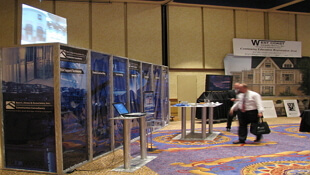
2009-With the success of the rear screen projection, BHA adds additional monitors to provide attendees with more information about BHA.
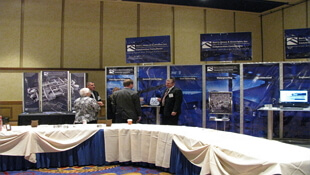
2010-BHA adds an interpretive professional development exhibit targeted to Building Envelope issues allowing adjusters and other non-construction professionals hands on access to the systems and components at the heart of many related such claims.


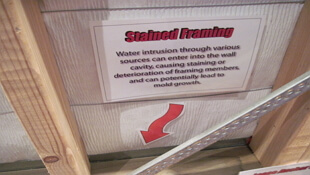
2011-BHA's Swing for Charity challenge is born.

2012-Always innovating, BHA expands its rear projection and professional development offerings to West Coast attendees.

2013-BHA showcases additional capabilities with a twenty-four foot, custom, convex, immersive video experience.

2014-BHA adds an iPhone display to give a hands-on demonstration of their data collection methods.
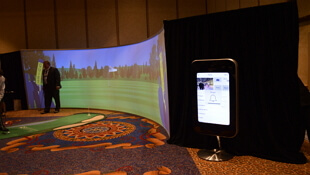
2015-BHA's twenty-four foot , custom, convex, immersive video experience was elevated with two additional rear projection screens, reflecting BHA's newest capabilities and services.

2016-BHA dazzles attendees with their new exhibit comprised of more than 15 integrated, high definition, LCD displays. iPads are stationed on tables to conveniently demonstrate BHA's data collection processes.
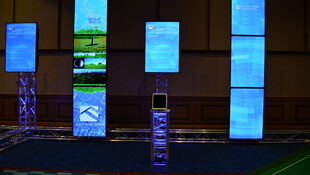
2017-BHA's Swing for Charity Golf Challenge raised $2,225.00 for the National Coalition for Homeless Veterans and $1,900 for Final Salute.
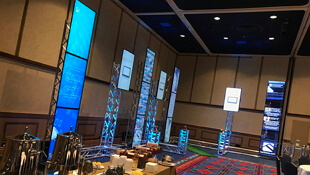
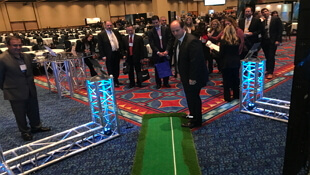
Read the court decisionRead the full story...Reprinted courtesy of
Real Estate & Construction News Round-Up (01/11/23) – Construction Tech, Housing Market Confidence, and Decarbonization
February 01, 2023 —
Pillsbury's Construction & Real Estate Law Team - Gravel2Gavel Construction & Real Estate Law BlogTo kick of 2023, this week’s news round-up dives into contech inventions projected to impact the industry, shifting home prices and buyer confidence, investors prioritizing decarbonization efforts, and more.
- From holograms to robots, these 6 contech innovations are projected to tackle some of construction’s toughest issues. (Robyn Griggs Lawrence, Construction Dive)
- Manufacturing and data center projects will support the U.S. construction industry as work begins to slow on retail projects, warehouses and offices. (Sebastian Obando, Construction Dive)
- Despite macroeconomic headwinds, doubling down on decarbonization efforts is projected to be top-of-mind for investors and occupiers in 2023. (JLL)
Read the court decisionRead the full story...Reprinted courtesy of
Pillsbury's Construction & Real Estate Law Team
Airbnb Declares End to Party!
January 27, 2020 —
Patrick J. Paul - Snell & Wilmer Real Estate Litigation BlogAs municipalities around the country evaluate changes to their respective codes in an effort to exert greater control over bad actors in the vacation rental market, Airbnb announced on November 2nd that it is banning party houses. The move comes in response to the shooting deaths of five people at a Halloween party hosted at an Airbnb rental house in Orinda, CA. CEO Brian Chesky announced on Twitter that starting November 2, Airbnb would ban “party houses” and redouble the company’s efforts to “combat unauthorized parties and get rid of abusive host and guest conduct.” twitter.com/bchesky
The four-bedroom rental reportedly had been rented on Airbnb by a woman who advised the owner her family members had asthma and needed to escape smoke from a wildfire burning in Sonoma County about 60 miles north of Orinda earlier in the week. Nevertheless, the homeowner was suspicious of a one-night rental on Halloween and reminded the renter that no parties were allowed. Having received complaints from neighbors and witnessing some party activity via his camera doorbell, the homeowner called police who were en route to the home, but arrived after the shooting. The Halloween party apparently was advertised on social media as an “Airbnb Mansion Party,” with an admission fee of $10 per person.
Independently owned vacation rentals are currently growing at a faster rate than hotels or motels, and in some instances are owned by out-of-state investors seeking not only a real estate return on investment, but also a return on investment associated with revenue streams generated by “pay to play” parties promoted on social media.
Read the court decisionRead the full story...Reprinted courtesy of
Patrick J. Paul, Snell & WilmerMr. Paul may be contacted at
ppaul@swlaw.com
Deterioration of Bridge Infrastructure Is Increasing Insurance Needs
December 03, 2024 —
Grace Calengor - Construction ExecutiveAs the world is taken by storm—literally, with increasing hurricanes, tornadoes, wildfires and more—insuring construction projects and infrastructure is becoming more complicated yet more necessary. Sean Pender, senior vice president of construction and development at CAC Specialty, is a leading specialty insurance broker and advisor. As major-storm season for the Northern hemisphere rounds out, he speaks with Construction Executive about the potential risk and insurance implications to the process of ensuring proper repairs, replacements and other forms of maintenance to one of the country’s most pivotal pieces of infrastructure: bridges.
What does insurance coverage look like for building bridges in various environments throughout the country?
Insurance is essential to protect the entity that owns the bridge during construction. Bridges under construction are at the highest risk of collapse because they are not yet fully stabilized and are exposed to severe weather and natural disasters, which could cause significant damage to the structure or injury to workers and civilians. Therefore, comprehensive liability insurance programs—typically with coverage limits of $50 to $100 million or higher—are crucial, especially with activities on or over waterways.
Reprinted courtesy of
Grace Calengor, Construction Executive, a publication of Associated Builders and Contractors. All rights reserved.
Read the court decisionRead the full story...Reprinted courtesy of




































































